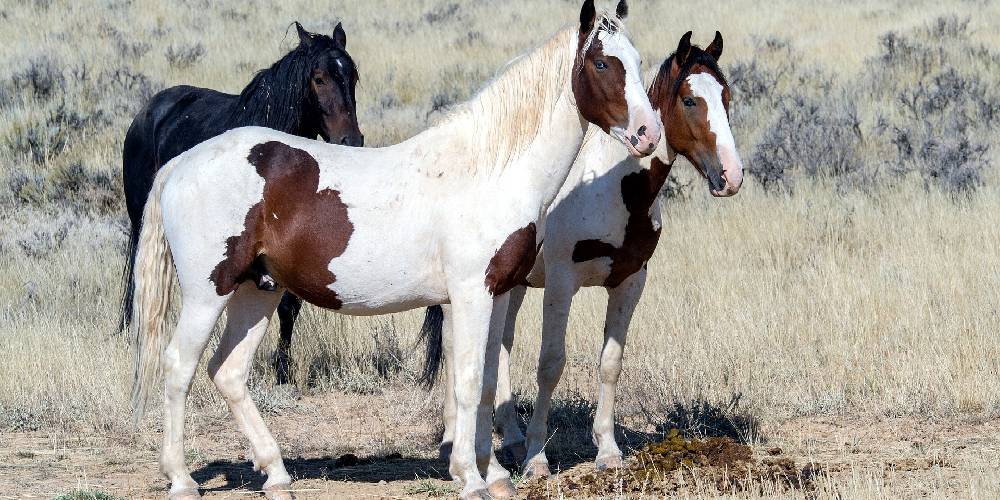Wild horses are amazing animals that to me are the definition of grace, beauty, and freedom. Whether they are the wild Mustangs that roam across North America or the wild Przewalski’s horses that thrive in Central Asia, they all are fascinating. There are so many things to learn and know about the wild horses of this world that it was really hard to narrow down all this information to these 10 fun facts.
10. A Female Horse Is The One Who Leads The Herd
Though there is only one adult male or stallion in the herd, it is actually one of the females who leads the herd. This female is known as a lead mare and is often dominant over all the other females in the herd.
Often, the lead mare will also be the stallion’s favorite herd member and he may choose to mate with her more often than any of the other mares in his herd.
9. Wild Horses Use Each Other’s Tails To Swish Flies Out Of Each Other’s Faces
You may have seen horses doing this both in the wild and in a turnout or a pen where horses are put together. Horses do this by standing nose to tail and swishing their tails back and forth in each other’s faces. This helps to keep the flies out of each other’s faces. Sometimes horses will line up in a line including many horses and do this to each other.
The tail makes a great natural fly swatter. Lining up like this makes the summer and spring months where the flies are at their worst a lot more bearable.
8. Only One Adult Male Can Be Found In A Herd Where Females Are Present
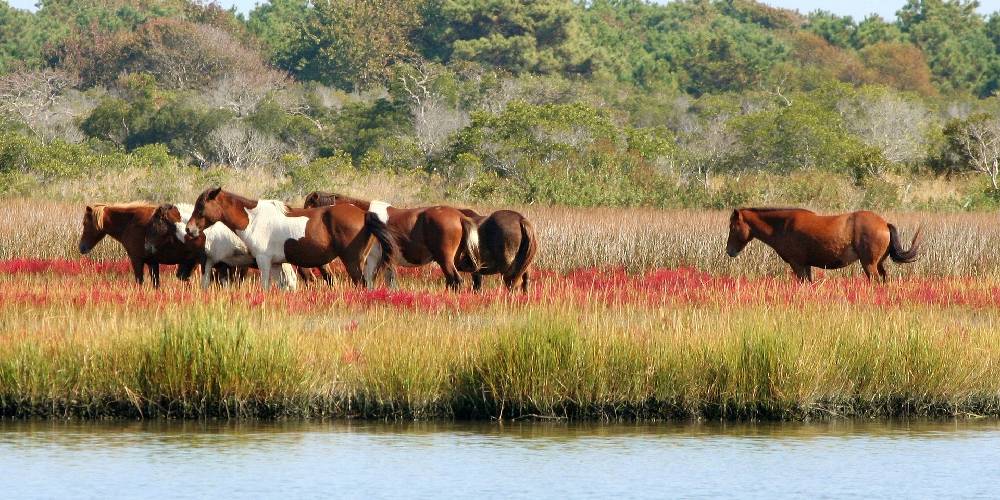
In most herds of wild horses, there are pretty much only females in a herd except for the one stallion. This stallion mates with protects, and tends to each mare in his herd.
The only time another male would be present in a herd of mares would be if a mare had a colt rather than a filly. This colt would later be kicked out of the herd once he’s old enough to survive on his own.
7. Herds Known As Bachelor Bands Try To Steal Mares From Other Stallions
The colts and stallions kicked out of their herds once they are old enough will often get together and create herds known as bachelor bands. These bachelor stallions in these groups will often follow herds of mares and try to lead some of the mares away from their herd where they then go ahead and create their own herd.
Because these stallions will stalk herds, the lead stallion of a herd must be on high alert and needs to be ready to defend itself and its mares from being injured or taken by a bachelor.
6. The Most Common Coat Color Seen In Wild Mustangs Is Bay
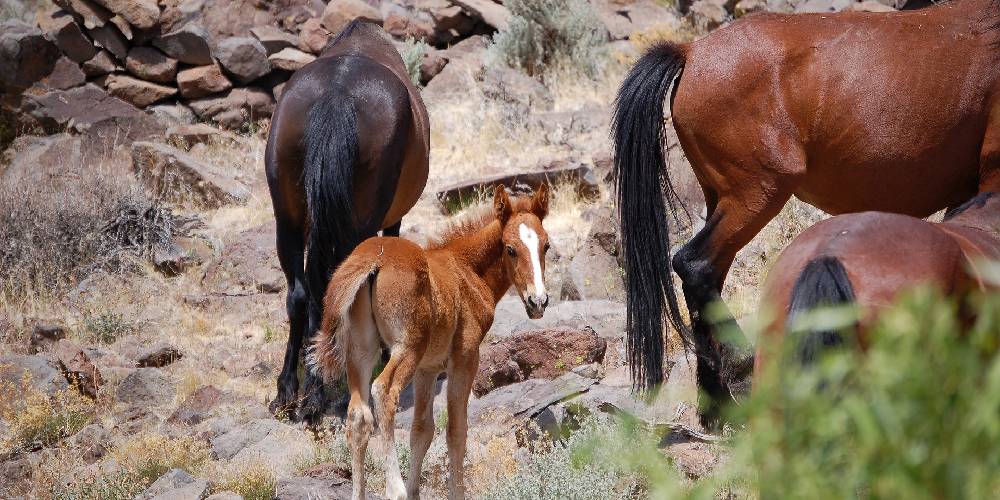
The most common color seen in horses overall is bay. There are more bay horses in the world than there are horses of any other color.
Though there are many other colors seen in wild horse herds, the bay color is still the most common.
Wild horses, unless a certain breed (like the Przewalski’s horse) can be any color or pattern under the sun.
5. Male Foals, When Old Enough, Will Be Kicked Out Of Their Herd
Male foals, once able to live on their own away from their mothers will be kicked out of their herd by the lead stallion. This is because having another stallion there is a danger to the well-being of the herd. If there are two stallions controlling the same herd, then fights are likely to break out and the original lead stallion risks having the younger stallion running off with some of his mares.
Because of all of this, colts, when weaned from their mothers and living mainly independently, will be removed from a herd and left to find their own herd of females or join a bachelor band.
4. Wild Horses Live For Between 15 & 25 Years
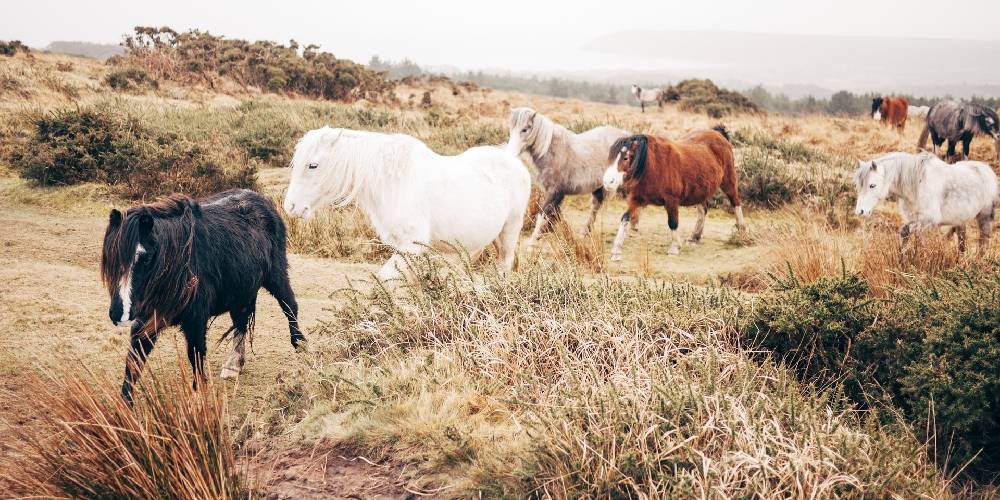
Because wild horses don’t have access to a veterinarian or a farrier and they are left to survive in the elements, it is really unlikely that they will live as long as the average domesticated horse.
Just like domesticated horses, wild horses can get issues like laminitis, Cushing’s disease, and colic. Without access to a veterinarian or a farrier, they are more likely to die from these issues than a domesticated horse is.
3. Wild Horses’ Hooves Trim Themselves
Because wild horses don’t have horseshoes, their feet need to be extra hard to make up for the protection a horseshoe would offer them.
As the hoof grows, the extra old growth on the ends of the hooves will begin to peel, crack, and break off. Basically, for the most part, the hoof will trim and break off itself with time.
2. Wolves, Bears, Coyotes, & Mountain Lions Are The Horse’s Natural Predators
In the wild, especially in North America, wild animals such as cougars, bears, wolves, and coyotes are a horse’s natural predators. These animals will usually prey on weaker members of the herd. If a herd is attacked, the predators usually target the weakest members of the herd. This means that foals, elderly herd members, slower horses, lame and injured herd members, and sick herd members are the ones most likely to be targeted by a hunting predator.
1. Some Wild Horses Can Be Tamed
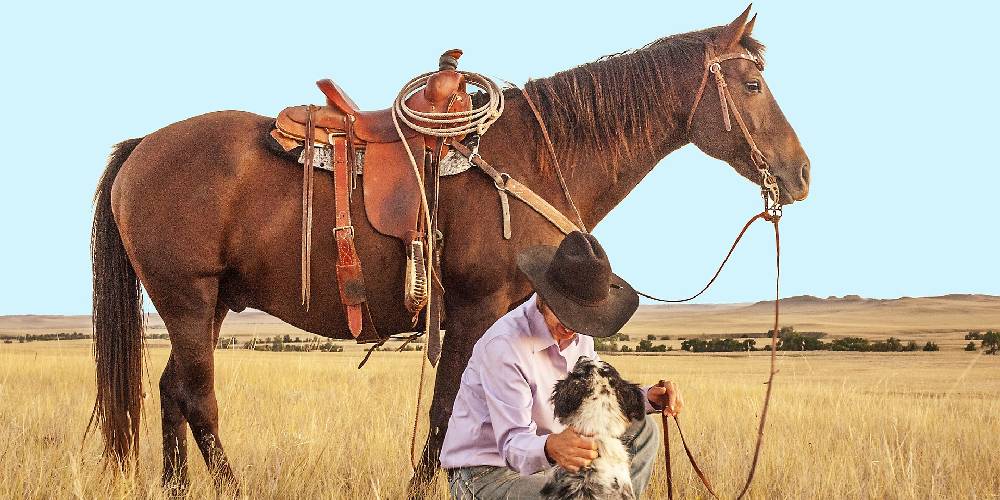
Every year, the Bureau of Land Management (an association in the United States) hosts a mustang round-up. In these roundups, fences, traps, helicopters, and specially trained horses are used to catch the wild horses
These round-ups are done because of the great number of wild horses in an area. If there are too many horses, the vegetation won’t be able to support the population and the animals will suffer.
These wild horses are then sold and auctioned off to people who either take them to preserves and sanctuaries, tame them, or compete in challenges with them.
Mustangs, once tames and taught to trust people, are often one of the most loving horses ever, and earning that trust with a mustang is something that only those who’ve experienced it will understand.

